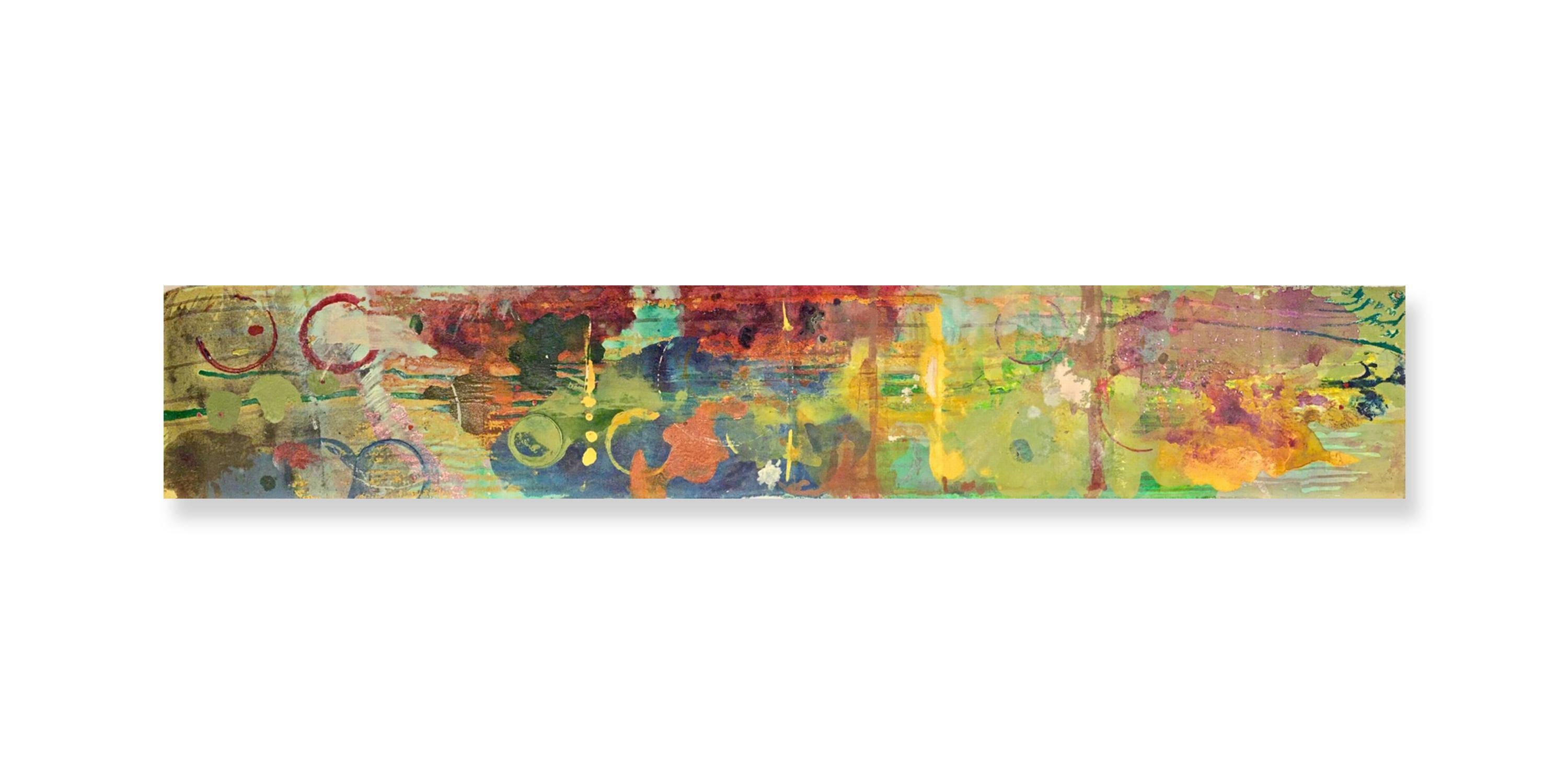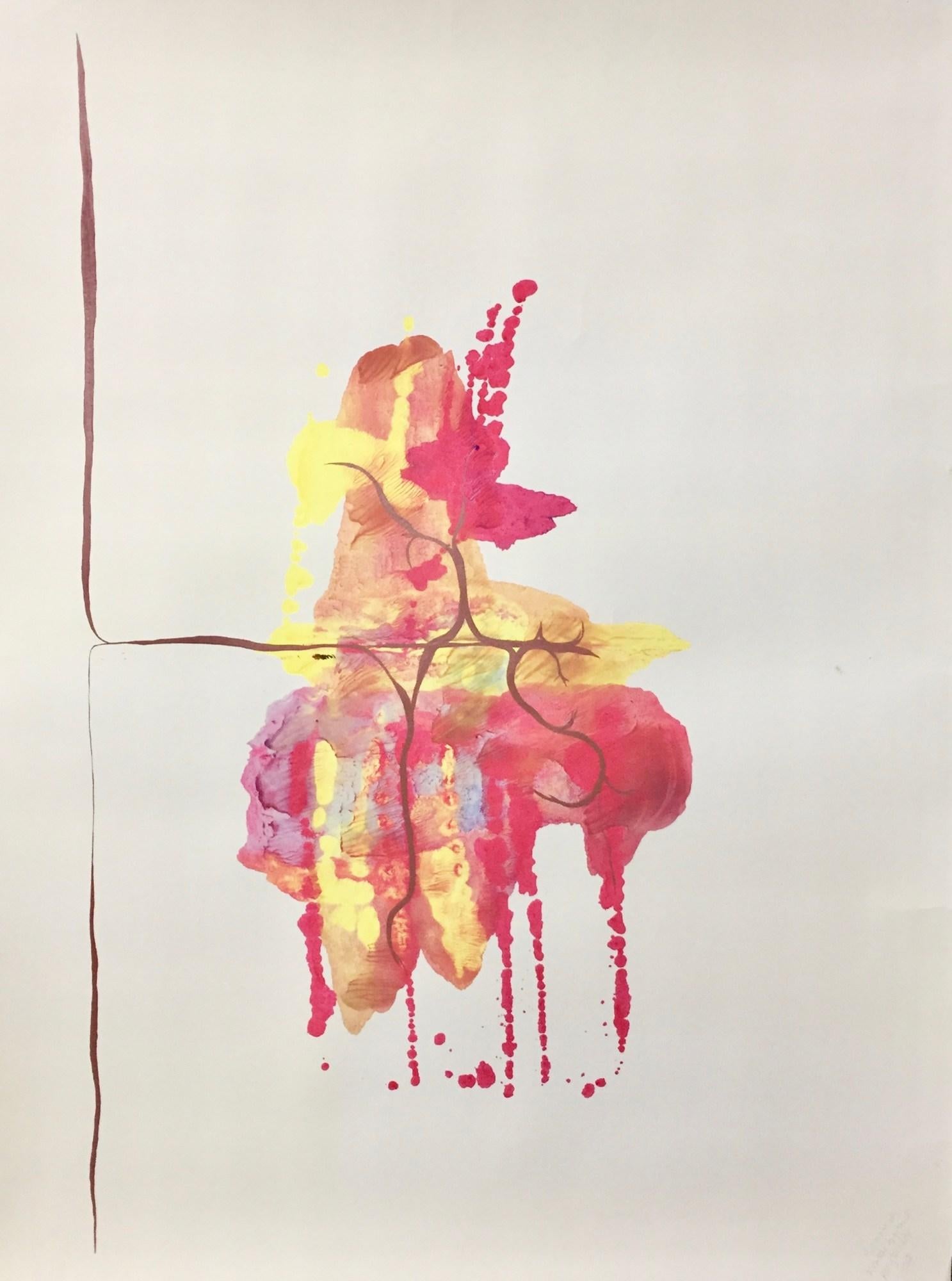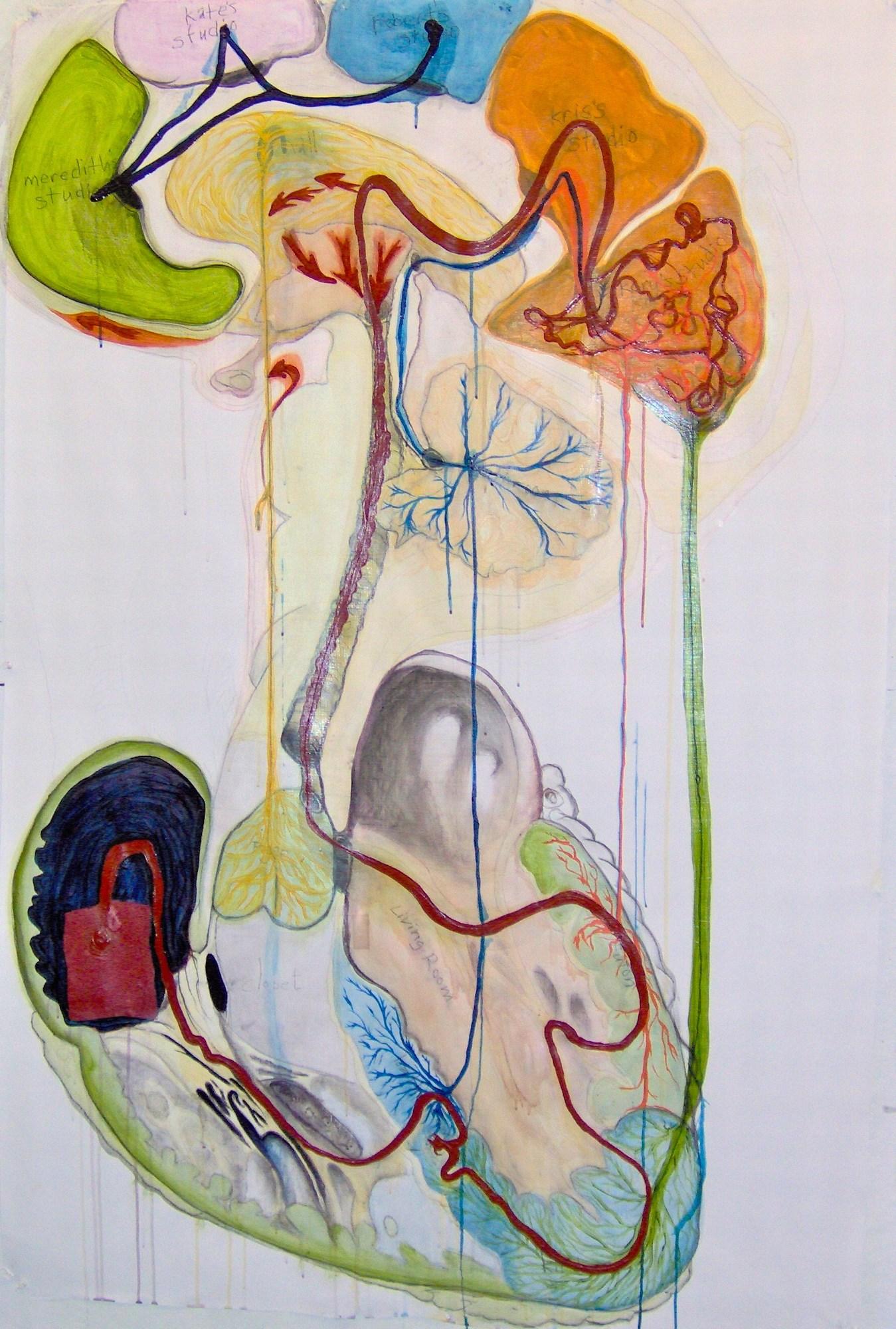David Hare"Cronus Asleep in the Cave" Mixed Media Work on Paper by David Hare1971
1971
About the Item
- Creator:David Hare (1917-1992, American)
- Creation Year:1971
- Dimensions:Height: 26 in (66.04 cm)Width: 35 in (88.9 cm)
- More Editions & Sizes:UniquePrice: $30,000
- Medium:
- Movement & Style:
- Period:
- Condition:
- Gallery Location:New York, NY
- Reference Number:1stDibs: LU1841214424892
David Hare
David Hare, a surrealist and Abstract Expressionist sculptor and photographer, was born in New York City on March 10, 1917. From 1936–37, he studied biology and chemistry at Bard College in Annandale-on-Hudson, New York. Hare had no formal training in art but began experimenting. He took up photography in the 1930s and by the end of the decade was working in color. The Walker Galleries in New York exhibited his photographs in 1939. From 1941–44, Hare founded and edited the surrealist magazine VVV with André Breton, Marcel Duchamp and Max Ernst. Peggy Guggenheim presented solo shows of Hare's work in her The Art of This Century Gallery from 1944–47. In 1948, he was a founding member, together with William Baziotes, Robert Motherwell and Mark Rothko, of The Subjects of the Artist school in New York and Hare, became friendly with Jean-Paul Sarte. Hare died on December 21, 1992, in Jackson.
- ShippingRetrieving quote...Ships From: New York, NY
- Return PolicyA return for this item may be initiated within 3 days of delivery.
- "Cronus Dining" Mixed Media On Paper Yellow and White Composition on PaperBy David HareLocated in New York, NYDavid Hare Cronus Dining, 1968 Graphite, acrylic, paper collage on board 44 x 34 inches “Freedom is what we want,” David Hare boldly stated in 1965, but then he added the caveat, “a...Category
1960s Abstract Abstract Paintings
MaterialsPaper, Acrylic, Graphite
- "Cronus View from the Cave" Abstract Mixed Media Composition by David HareBy David HareLocated in New York, NYDavid Hare Cronus View from the Cave, 1971 Graphite, Ink wash, Paper Collage on Paper on Board 25 x 33 inches “Freedom is what we want,” David Hare boldly stated in 1965, but then ...Category
1970s Abstract Abstract Paintings
MaterialsPaper, Ink, Graphite
- "Repetition" Chryssa, Greek Female Artist, Abstract, Neon Light Art StudyBy Chryssa Vardea-MavromichaliLocated in New York, NYChryssa Repetition Signed lower right; titled on the reverse Gouache, watercolor, charcoal, and graphite on paper 15 x 11 inches Born and educated in Athens, Greece, Vardea Chryssa, known professionally as Chryssa, became a U.S. citizen and earned a reputation for her sculptured assemblages utilizing light from neon, and plexiglas combined with mixed media pieces. One of her pieces, Untitled Light Sculpture (1980) is 22 feet long and is installed in the atrium of a building at 33 Monroe Street in Chicago. It was programmed electronically to create changing patterns of reflected light through 900 feet of neon tubing. Chryssa's sculptures with precision and definite form were a reaction against the prevalent Abstract Expressionism of the 1950s with its emphasis purely upon the artist's intent. In her work, the focus is on materials and the way they are shaped for specific use by craftsmen. She got her early education in Athens, and first studied to be a social worker. She was then sent by the Greek Ministry of Social Welfare to the Dodecanese Islands and later to the Ionian Sea island of Zante, whose population had suffered great loss from earthquakes. Disillusioned that monies were being provided to restore monasteries but not to help other earthquake victims, Chryssa changed her life's direction to become a painter. In Athens, she studied art with Anghelos Prokopion. Then she went to Paris, France, and studied briefly at the Academie Grande Chaumiere and associated with surrealists Andre Breton, Edgard Varese, and Max Ernst. In 1954, she moved to San Francisco, California for a year of study at the California School of Fine Arts, and there she first saw the work of Jackson Pollock, which had a freeing affect on her and inspired her to experiment with pure form. But later she reacted against action painting with her assemblage sculptures of controlled precision. In 1955, Chryssa settled in New York City, and became the first artist to incorporate neon light tubing and commercial signs into sculpture. It is asserted that her "mature work grew out of the Greek experience, before and after World War II, wedded to the raucous letters, signs, symbols, and lights of Time Square, New York City" (Heller 125). In fact, she was so taken with the lights of Times Square that she unsuccessfully tried to get a job as a sign maker but was prevented by labor union rules. However, one of the members gave her sign-making lessons in his shop. She first made Pop images such as depictions of automobile tires and cigarettes and in sculptures, utilized letters of the alphabet, ideas that predated similar images by Jasper Johns and Andy Warhol. Her first major work of interwoven light and letters was Times Square Sky of 1962, but she was dissatisfied because she thought the piece was too crowded. To create a sense of breathing, she inserted neon light, and for the first time, this material became an art medium. From that time, she was prolific and created many variations based on the letters W and A. For her, a primary motivating factor was remaining cool or mentally collected amidst the onslaught of bombarding information and to process it through her creations in new ways so that nothing was repeated. She set up her own work place...Category
Late 20th Century Abstract Abstract Paintings
MaterialsGouache, Graphite, Paper, Charcoal, Watercolor
- "Untitled, " Alan Fenton, Abstract ExpressionismLocated in New York, NYAlan Fenton (1927 - 2000) Untitled, 1965 Charcoal and graphite on paper 23 x 17 inches Signed and dated lower right Fenton's quiet and contemplative nonob...Category
1960s Abstract Expressionist Abstract Paintings
MaterialsPaper, Charcoal, Graphite
- "Cronus Dining (Night)" Abstract Acrylic and Ink on Board Painting by David HareBy David HareLocated in New York, NYDavid Hare Cronus Dining (Night), 1971 Acrylic, ink, paper collage on paper on board 39 1/2 x 29 5/8 inches “Freedom is what we want,” David Hare boldly stated in 1965, but then he ...Category
1970s Abstract Abstract Paintings
MaterialsInk, Acrylic, Board
- "Erotic #1 (Cronus Sex)" Acrylic and Paper Collage on Linen Canvas AbstractBy David HareLocated in New York, NYDavid Hare Erotic #1 (Cronus Sex), 1970 Acrylic and paper collage on linen 68 x 51 inches “Freedom is what we want,” David Hare boldly stated in 1965, but then he added the caveat, ...Category
1970s Abstract Abstract Paintings
MaterialsLinen, Paper, Acrylic
- "365 Vessels", Mixed technique on tissue white paper, Abstract, 50 x 33 cmLocated in Carballo, ESThis series of works by the Danish artist Peter Kramer (Roskilde, 1959) with numerous exhibitions between Spain and Denmark are entitled "365 urns", in which the artist works with ti...Category
21st Century and Contemporary Abstract Mixed Media
MaterialsOrganic Material, Adhesive, Ink, Mixed Media, Acrylic, Handmade Paper, T...
- "365 Vessels", Mixed technique on tissue white paper, Minimalist, 50 x 33 cmLocated in Carballo, ESThis series of works by the Danish artist Peter Kramer (Roskilde, 1959) with numerous exhibitions between Spain and Denmark are entitled "365 urns", in wh...Category
21st Century and Contemporary Abstract Expressionist Mixed Media
MaterialsAdhesive, Ink, Mixed Media, Acrylic, Handmade Paper, Tissue Paper, Graph...
- RemnantBy Kory TwaddleLocated in Kansas City, MOArtist : Kory Twaddle Title : Remnant Materials : Acrylic, tempera, gouache, confetti, glitter, and mixed media on canvas Date : 2019 Dimensions : 11 x 56 x 0.2 inches Kory Twaddle...Category
2010s Abstract Mixed Media
MaterialsPencil, Graphite, Color Pencil, Paint, Newsprint, Cardboard, Watercolor,...
- California Monoprint Apartment BiogramBy Kory TwaddleLocated in Kansas City, MOArtist : Kory Twaddle Title : California Monoprint Apartment Biogram Materials : Tempera and acrylic monoprint on paper Date : 2008 Dimensions : 52 x 42 x 0.1 inches Kory Twaddle ...Category
2010s Abstract Mixed Media
MaterialsPaint, Paper, Conté, Charcoal, India Ink, Acrylic, Tempera, Watercolor, ...
- Organ BuildingsBy Kory TwaddleLocated in Kansas City, MOArtist : Kory Twaddle Title : Organ Buildings Materials : Oil, acrylic, charcoal, conté crayon, marker, string, hair, postage stamps, buttoms, and mixed media on paper mounted on pa...Category
Early 2000s Abstract Impressionist Mixed Media
MaterialsGraphite, Monoprint, Paint, Paper, Conté, Charcoal, India Ink, Acrylic, ...
- Third Floor SystemsBy Kory TwaddleLocated in Kansas City, MOArtist : Kory Twaddle Title : Third Floor Systems Materials : Acrylic, tempera, gouache, glitter, paint brushes, and mixed media on drawing pad cardboard back with spiral Date : 201...Category
2010s Abstract Mixed Media
MaterialsPencil, Graphite, Color Pencil, Paint, Newsprint, Cardboard, Watercolor,...






